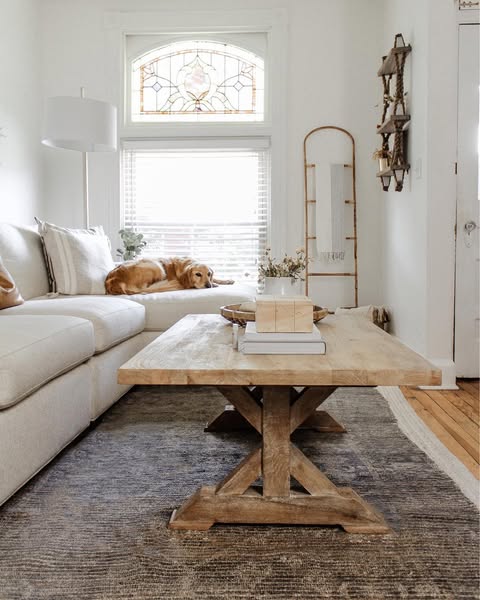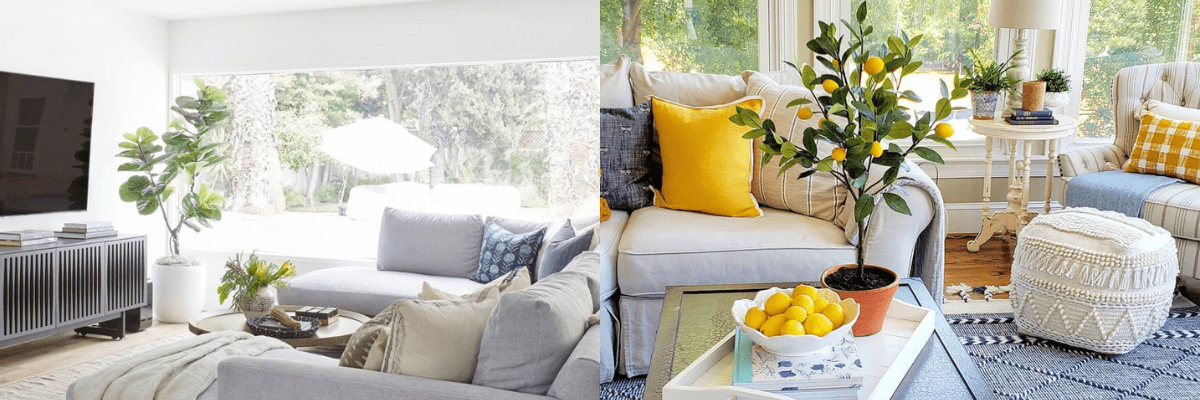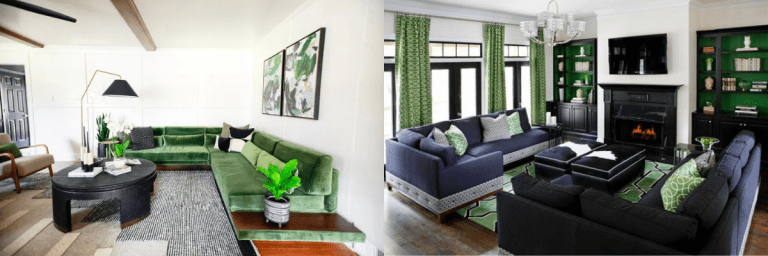17 Game-Changing Ideas for Small Apartment Living Rooms That Make a Big Impact
Living in a small space doesn’t mean sacrificing style or comfort. In fact, it’s an opportunity to get creative and intentional with your design choices.
I’ve curated 17 inspiring ideas that transform cramped living rooms into functional, beautiful spaces you’ll love spending time in. These aren’t just pretty pictures—they’re practical solutions to real small-space challenges.
Let’s explore how you can maximize every square inch of your living room while creating a space that feels uniquely yours.
Smart Design Tips for Small Apartment Living Rooms
Let’s talk about those game-changing tricks that can transform your cramped living space into something that feels open, inviting, and perfectly you.
I’ve pulled together my favorite small-space strategies that go beyond just looking good—they actually make your daily life easier and more enjoyable.
These aren’t just tips; they’re solutions to the real challenges of small-space living.
1. Play with Light and Color
Light is your best friend in a compact space! I always recommend keeping window treatments simple or even sheer to maximize natural light.
For paint colors, soft neutrals and light tones create an airy feeling—but don’t be afraid of dark colors as accents or even on a feature wall. Dark colors can actually create depth that makes walls recede visually.
Try painting your ceiling a shade lighter than your walls. This little trick draws the eye upward, creating the illusion of height. And remember—glossy finishes reflect light better than matte ones, subtly expanding your space.
2. Furniture That Works Harder
Why settle for single-function pieces when space is at a premium? Look for ottomans with hidden storage, expandable dining tables, or sleeper sofas if you need guest accommodations.
I love nesting tables that can be separated when you have friends over and tucked away when you don’t.
The scale of your furniture matters enormously! Oversized pieces eat up your floor space and make movement difficult.
Choose slim-profile sofas, chairs with exposed legs, and tables that don’t visually weigh down the room. Your furniture shouldn’t just fit—it should let you move around comfortably.
3. Create Visual Flow
Blocking sightlines makes any space feel smaller. I recommend furniture arrangements that let your eye travel across the room uninterrupted.
Consider floating your sofa slightly away from the wall rather than pushing everything to the perimeter—this actually creates a sense of depth.
Consistent flooring throughout connected spaces creates continuity that expands your visual space. If you can’t see where one room ends and another begins, both rooms feel larger.
4. Smart Storage Solutions
Vertical storage is your secret weapon! Wall-mounted shelving draws the eye up while keeping floor space clear. Consider built-ins around doorways or windows to transform “dead space” into functional storage.
Clear surfaces are crucial for making a small room feel spacious. Incorporate hidden storage wherever possible—under ottomans, inside coffee tables, or with wall-mounted cabinets that close up when not in use.
5. Optical Illusions That Work
Mirrors aren’t just decorative—they’re magical space-expanders! Place a large mirror opposite a window to double the natural light and create the illusion of another room beyond. Even mirrored furniture or glass tabletops reduce visual weight.
Hang your curtains high and wide. Mounting curtain rods close to the ceiling and extending them beyond the window frame makes windows appear larger and ceilings higher.
6. The Details Matter
In small spaces, every item should earn its keep. I find that fewer, larger decorative pieces create a cleaner look than many small objects. A single striking art piece can anchor a room without cluttering it.
Consider the negative space—the empty areas—as part of your design. These breathing spaces are crucial for preventing a cramped feeling. Sometimes what you don’t include is as important as what you do.
7. Layout Logistics
Think in zones! Even the smallest living room might need to accommodate multiple functions—lounging, working, dining, or entertaining.
Define these areas with rugs, lighting, or furniture arrangement rather than space-consuming room dividers.
Don’t block pathways—you need at least 30 inches for comfortable movement through a space.
If furniture creates obstacles to natural movement patterns, your room will feel frustratingly small regardless of its actual size.
8. The Personal Touch
Your small space should still feel like you! Incorporate elements that tell your story—family photos, travel souvenirs, or collections displayed thoughtfully. Just be selective and rotate seasonal items rather than displaying everything at once.
Remember that a small living room can actually feel more intimate and cozy than a large one—embrace that! Create a space that wraps around you like a hug after a long day, perfectly tailored to how you actually live.
By applying these principles thoughtfully, your small living room won’t just look bigger—it will function better for your daily life. The best small spaces aren’t just styled well; they’re designed to make life easier and more beautiful, regardless of square footage.
17 Practical Ideas for Small Space Living Rooms
1. Texture-Rich Sanctuary
Want to know the secret to making a small space feel rich and inviting? Mix those textures! I love how layering different materials—like a nubby throw blanket over a smooth leather sofa—instantly adds depth without taking up space.
Try adding vibrant throw pillows in contrasting fabrics to create visual interest. Plants are your friends here too—they bring life to corners and soften hard edges.
A round coffee table is perfect for tight spaces since it eliminates sharp corners and improves flow. You can move through your space more easily while still having a functional surface for your coffee mug or magazine.
2. Clean-Lined Simplicity
When space is tight, clean lines and subtle colors will be your best friends. I’ve found that a minimalist approach actually makes rooms feel larger!
Choose furniture with exposed legs to create breathing room underneath—it’s a visual trick that helps the floor flow uninterrupted.
A geometric mirror isn’t just stylish—it bounces light around and doubles your space visually. Keep your media storage sleek and wall-mounted to free up valuable floor space.
The beauty of this style is how it combines function with breathing room—you’ll have everything you need without feeling boxed in.
3. Metropolitan Monochrome
Dark and dramatic or light and bright? You can go either way with an urban aesthetic! I recommend picking a tight color palette—maybe just black, white and one accent color—to keep things cohesive in a small space.
A simple coffee table anchors the room without overwhelming it. The key is choosing a few statement pieces rather than lots of small items.
This approach works wonderfully in apartments and lofts where architectural details might already be a feature. The result? A sophisticated space that feels intentional and curated, never cluttered or chaotic.
4. Light-Maximizing Openness
Light is your most powerful tool in a small living room. I always recommend maximizing natural light by keeping window treatments minimal and reflective surfaces strategically placed.
This style embraces openness and breathability—think lightweight furniture that doesn’t block sightlines. A large window becomes part of your design, essentially borrowing outdoor space to extend your room visually.
You can enhance this effect with plants that connect inside and outside spaces. The minimal furnishings aren’t just a style choice—they’re a practical way to maintain an uncluttered, spacious feel that makes your room live larger than its dimensions.
5. Strategic Corner Styling
Never underestimate those corners! I’ve seen amazing transformations happen when people get creative with awkward angles. A cozy reading nook or small workspace fits perfectly in these often-neglected spots.
Try a corner sectional that hugs the walls to maximize seating while keeping the center open for movement. Add floating shelves above for storage that doesn’t eat into floor space.
The neutral palette helps maintain a sense of openness, while wooden elements bring warmth and texture. This approach proves that every inch counts—even that tricky corner you thought was useless!
6. Flowing Curved Contours
Curves are magical in small spaces! I love how they soften the boxiness of typical rooms and create better flow. A curved sofa or round coffee table lets you move around more easily than angular pieces with sharp corners.
That large circular mirror? It’s not just decorative—it expands your visual space dramatically. The neutral colors create a calm backdrop while the interesting shapes add personality.
This style works because it balances simplicity with interesting silhouettes. You get a space that feels modern and inviting without the clutter that can make small rooms feel cramped.
7. Barrier-Free Expansion
Small spaces shine when you break down visual barriers! I’m a huge fan of open layouts that let your eye travel uninterrupted. This creates an expansive feeling even when square footage is limited.
Strategic furniture placement defines different functional zones without walls. The neutral palette plays a crucial role here—it creates cohesion across the entire space.
Large windows become a focal point that draws your eye outward, essentially borrowing outdoor space. Notice how the streamlined furniture keeps things feeling uncluttered while still providing comfort and function.
8. Multi-Function Kitchen Living
Multi-functional spaces are small-living superstars! I love how this setup maximizes every inch by combining living and dining functions near the kitchen. The window seat is genius—it provides extra seating without blocking pathways.
White cabinetry bounces light around, making the space feel larger. The floating shelves offer storage and display space without the visual heaviness of upper cabinets.
This arrangement works perfectly for apartments or small homes where separate formal rooms aren’t possible. You get all the functionality without needing more square footage!
9. Tech-Friendly Heritage
Who says small spaces can’t be characterful? I find that mixing old and new creates interest without requiring lots of stuff. The wall-mounted TV surrounded by shelving is a space-saving move that combines technology with charm.
Books and collected objects tell your story without cluttering surfaces. Pastel colors keep things light and airy—crucial in compact rooms.
This approach proves that functionality and personality can coexist beautifully! You can have your entertainment center and your style too, all without overwhelming your space.
10. Plush Minimalist Comfort
Can minimalism feel luxurious? Absolutely! I love how this style combines clean simplicity with touchable textures. The sectional offers maximum seating while hugging the wall to save space. Those geometric cushions?
They add pattern without chaos. Strategic lighting highlights specific areas, creating depth in a small footprint. The muted color palette creates a sense of calm that’s especially valuable in compact spaces.
This approach shows that “less is more” doesn’t mean “boring”—it means thoughtfully chosen elements that serve both function and beauty.
11. Bold Color Statement
Bold color choices can actually make small spaces sing! I find that rich, deep tones like teal create depth and interest without needing lots of accessories. That statement mirror does double duty—it’s both decorative and space-expanding.
Plush furnishings invite you to relax while ornamental touches add personality. The contrast between dark and light colors creates visual rhythm that keeps your eyes moving around the room.
This style proves that small spaces don’t need to be timid—they can be dramatic and sophisticated while still functioning beautifully.
12. Pet-Friendly Neutral Nook

Corner arrangements are space-saving superstars! I love how this setup maximizes an often underutilized area. The neutral palette keeps things feeling open while rustic wooden elements add character and warmth.
Notice how the furniture arrangement creates a conversation area that feels intentional, not cramped. The pet-friendly aspect is practical—proving that small spaces can accommodate your whole family, furry members included!
This arrangement works because it’s both efficient and inviting—the perfect combination for small-space living.
13. Vertical Rustic Charm
Height is your friend in small spaces! I’m obsessed with how this style celebrates vertical elements like exposed beams while keeping the footprint efficient.
The mix of contemporary and antique pieces creates interest without requiring lots of different items.
Open shelving filled with books adds color and personality while using wall space instead of floor space. Plants breathe life into the room, making it feel fresh and vibrant.
This approach works beautifully for unusual spaces like lofts where you want to highlight architectural features while maintaining functionality.
14. Art-Focused Storytelling
A well-curated wall tells your story without taking up precious floor space! I find that art creates a focal point that draws attention away from a room’s size limitations. The sectional sofa maximizes seating while keeping a compact footprint—crucial in small spaces.
Mixing vintage and contemporary art adds layers of interest and personality. This approach demonstrates how vertical decorating can add tremendous character without requiring more square footage.
Your walls become an extension of your style, working harder so your floor doesn’t have to!
15. Traditional Built-In Beauty
Traditional style works beautifully in small spaces when done right! I love how built-in shelving maximizes vertical storage while adding architectural interest. The harmonious blend of traditional and rustic elements creates warmth without business.
Those subtle color contrasts? They add definition without chopping up the space visually. Varied textures in cushions and drapes create interest without requiring lots of different objects.
This style proves that small spaces can feel established and sophisticated—size doesn’t limit your design personality!
16. Sunlit Cheerful Retreat
Small spaces shine when they embrace light and color! I’m drawn to how this room uses natural light as a design element, complemented by soft pastels that expand the visual space. The yellow accents add energy without overwhelming the room.
A patterned rug defines the area while adding personality. The textured pouf provides extra seating that can be moved easily as needs change.
This approach demonstrates how a cheerful, family-friendly living space doesn’t require square footage—just thoughtful choices that maximize light and function while maintaining a sense of fun.
17. Streamlined Essential Corner
Sometimes less truly is more! I’ve found that embracing minimalism in small corners creates breathing room that makes your entire space feel larger. The compact sofa provides seating without dominating the room. Those nested side tables?
They’re genius—pull them out when needed, tuck them away when not. Simple decor like pampas grass adds organic texture without clutter. Monochrome prints create interest without visual noise.
This style works because it prioritizes function and simplicity—proving that a small space can feel calming and intentional rather than cramped or chaotic.



























